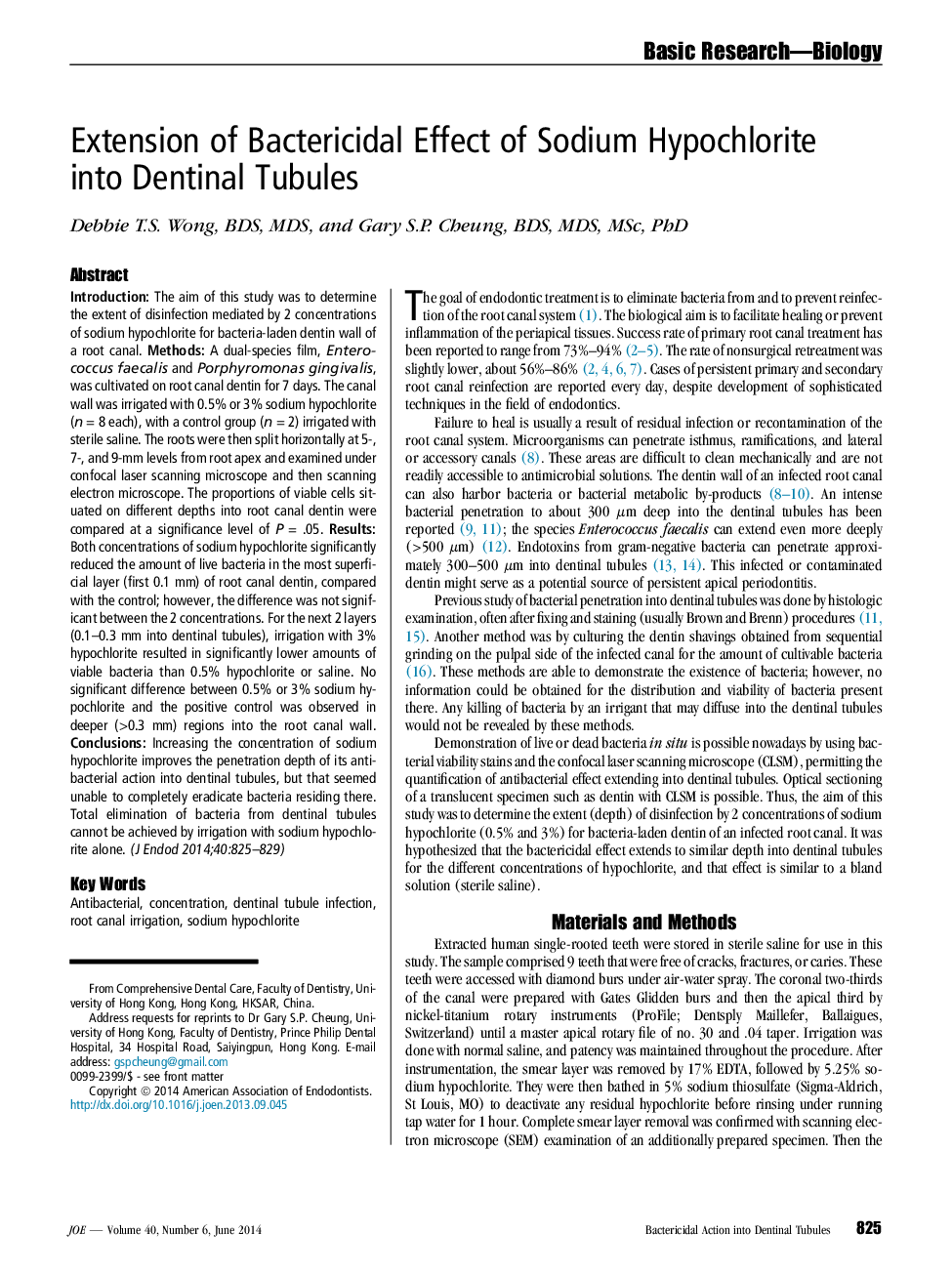| Article ID | Journal | Published Year | Pages | File Type |
|---|---|---|---|---|
| 3146866 | Journal of Endodontics | 2014 | 5 Pages |
IntroductionThe aim of this study was to determine the extent of disinfection mediated by 2 concentrations of sodium hypochlorite for bacteria-laden dentin wall of a root canal.MethodsA dual-species film, Enterococcus faecalis and Porphyromonas gingivalis, was cultivated on root canal dentin for 7 days. The canal wall was irrigated with 0.5% or 3% sodium hypochlorite (n = 8 each), with a control group (n = 2) irrigated with sterile saline. The roots were then split horizontally at 5-, 7-, and 9-mm levels from root apex and examined under confocal laser scanning microscope and then scanning electron microscope. The proportions of viable cells situated on different depths into root canal dentin were compared at a significance level of P = .05.ResultsBoth concentrations of sodium hypochlorite significantly reduced the amount of live bacteria in the most superficial layer (first 0.1 mm) of root canal dentin, compared with the control; however, the difference was not significant between the 2 concentrations. For the next 2 layers (0.1–0.3 mm into dentinal tubules), irrigation with 3% hypochlorite resulted in significantly lower amounts of viable bacteria than 0.5% hypochlorite or saline. No significant difference between 0.5% or 3% sodium hypochlorite and the positive control was observed in deeper (>0.3 mm) regions into the root canal wall.ConclusionsIncreasing the concentration of sodium hypochlorite improves the penetration depth of its antibacterial action into dentinal tubules, but that seemed unable to completely eradicate bacteria residing there. Total elimination of bacteria from dentinal tubules cannot be achieved by irrigation with sodium hypochlorite alone.
